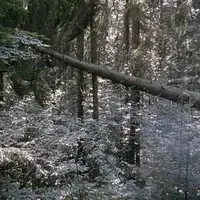NZ premiere of Ori Gersht's The Forest at MIC Toi Rerehiko
Written by

The fragile limits of human civilisation are explored in the New Zealand premiere of Ori Gersht's The Forest, at MIC Toi Rerehiko from 24 August to 5 October 2007.Shot deep in the Moskolovka Forest in the Ukraine, The Forest echoes the violent history of this border territory contested by Ukranians, Poles, Russians and Germa
The fragile limits of human civilisation are explored in the New Zealand premiere of Ori Gersht's The Forest, at MIC Toi Rerehiko from 24 August to 5 October 2007.Shot deep in the Moskolovka Forest in the Ukraine, The Forest echoes the violent history of this border territory contested by Ukranians, Poles, Russians and Germans. Gersht records a series of graceful, processional pans across bands of individual trees. Gradually the eye notices a number of trees mysteriously falling, with the soundtrack amplifying the sound of each crash.
"An elegy for the nameless dead lost in wartime atrocities in this region, the piece - enacts the kind of ceaseless vigil that will be needed if these crimes are not to be repeated. "The Forest is a uniquely powerful work, unstinting and indelibly haunting, it combines a terrible sadness with a quiet yet formidable strength." - Steven Bode, Tracks in the Forest, from the accompanying catalogue Ori Gersht The Clearing.
Gersht was born in Tel Aviv in 1967 and graduated London's Royal Collage of Art in 1995. His work has been showcased at the Galerie Martin Kudlek in Cologne, Germany with the touring exhibition The Knowledge Factory organised by The British Council and the Photographer's Gallery, and was the subject of a major solo exhibition in his native Israel at the Tel Aviv Museum of Art. When previously shown in the Tate Gallery in London and the Guggenheim Museum in New York, it was observed that Gersht's art "affords us a view, realising our dream to be merely a fly-on-the-wall witness to an enormous event we could never access otherwise" (Timothy Liu, Art Paper).